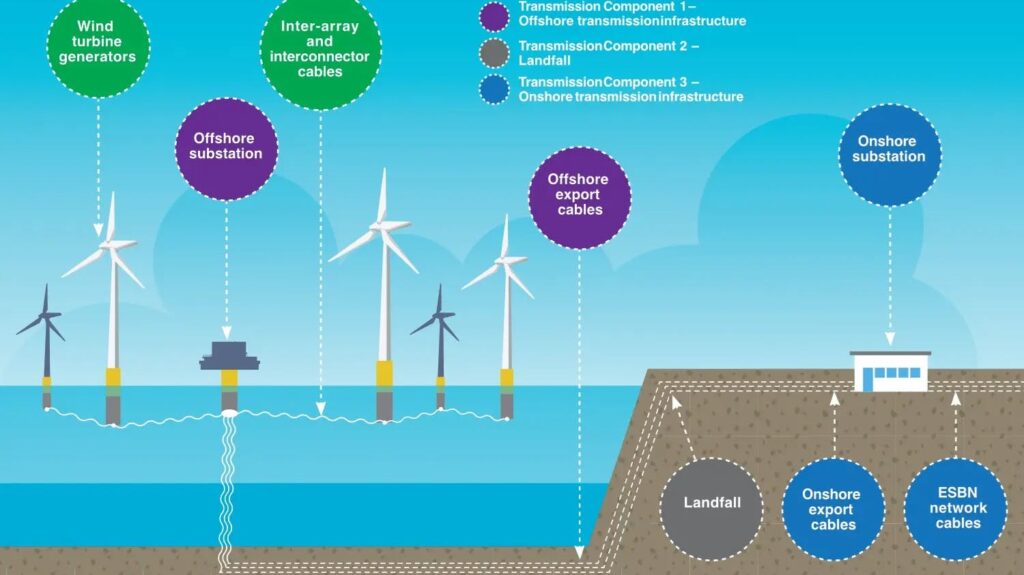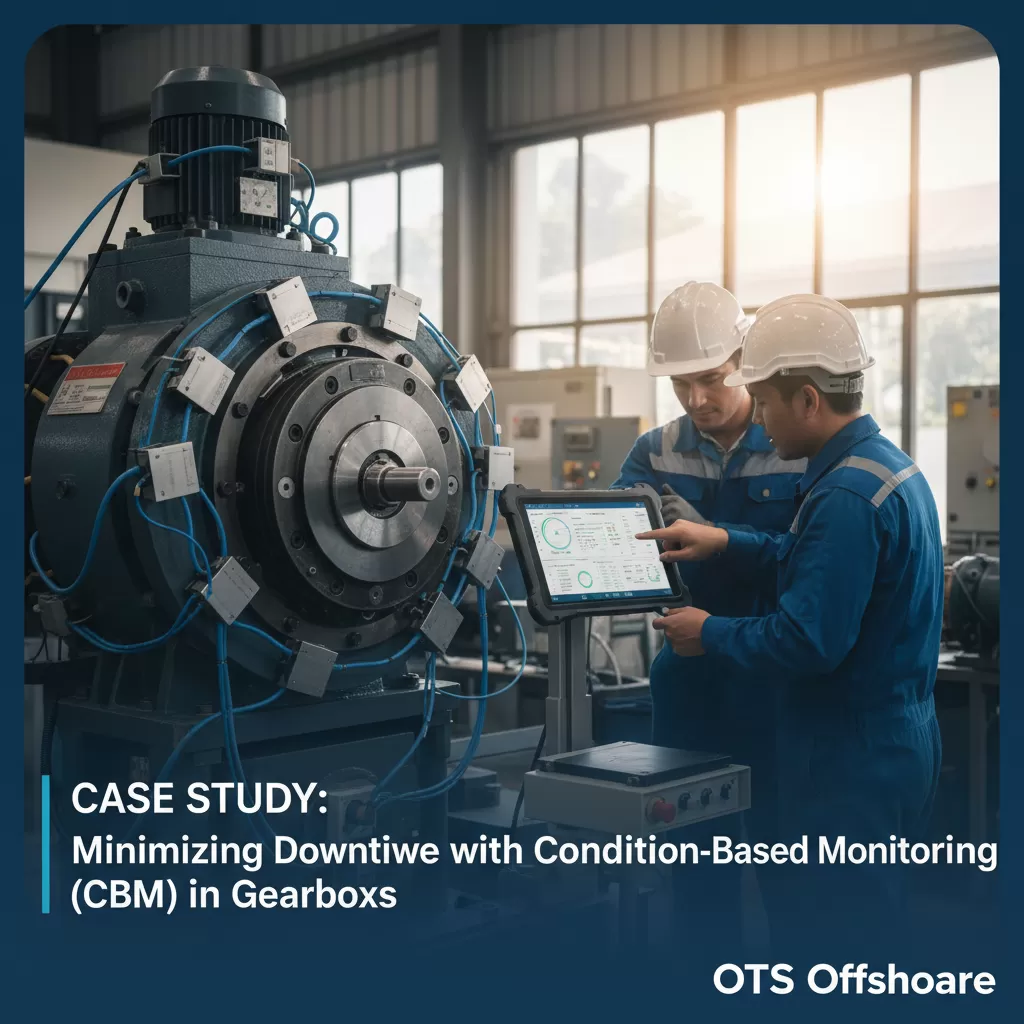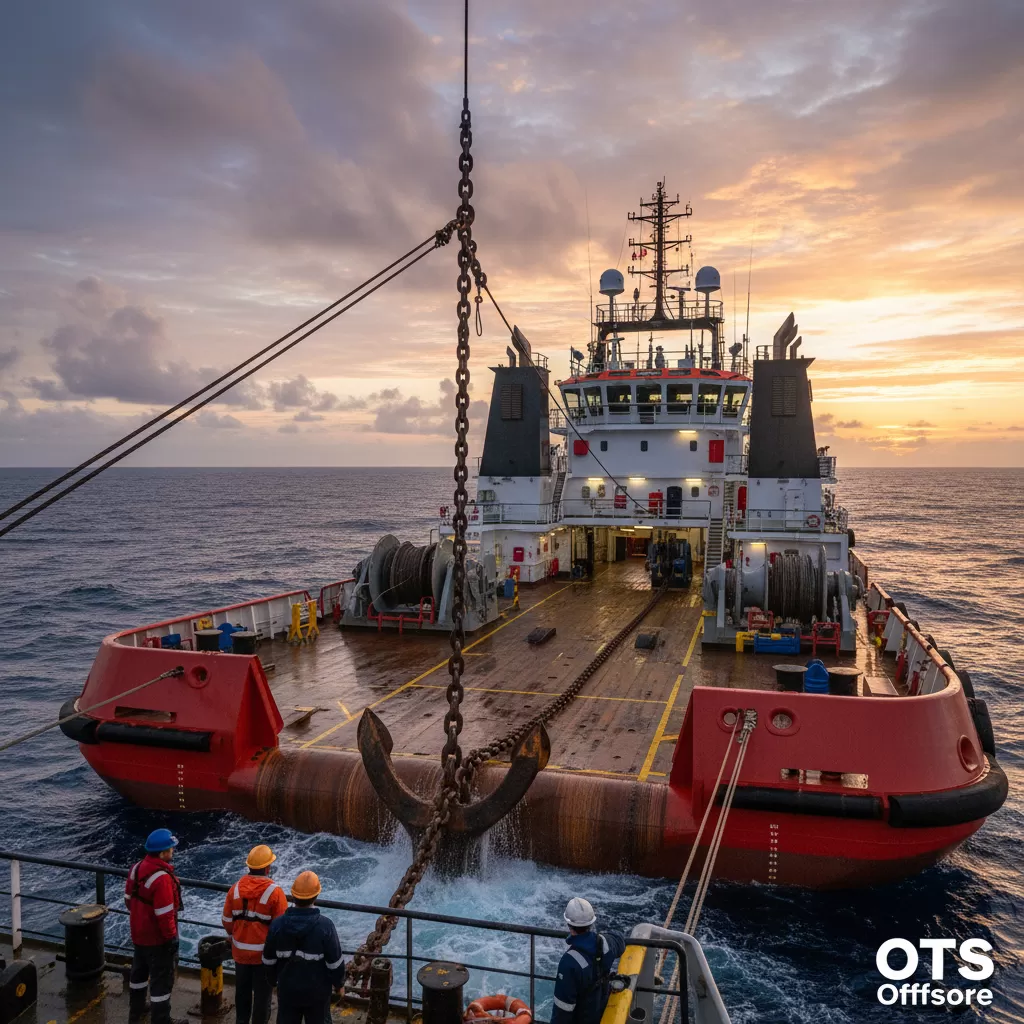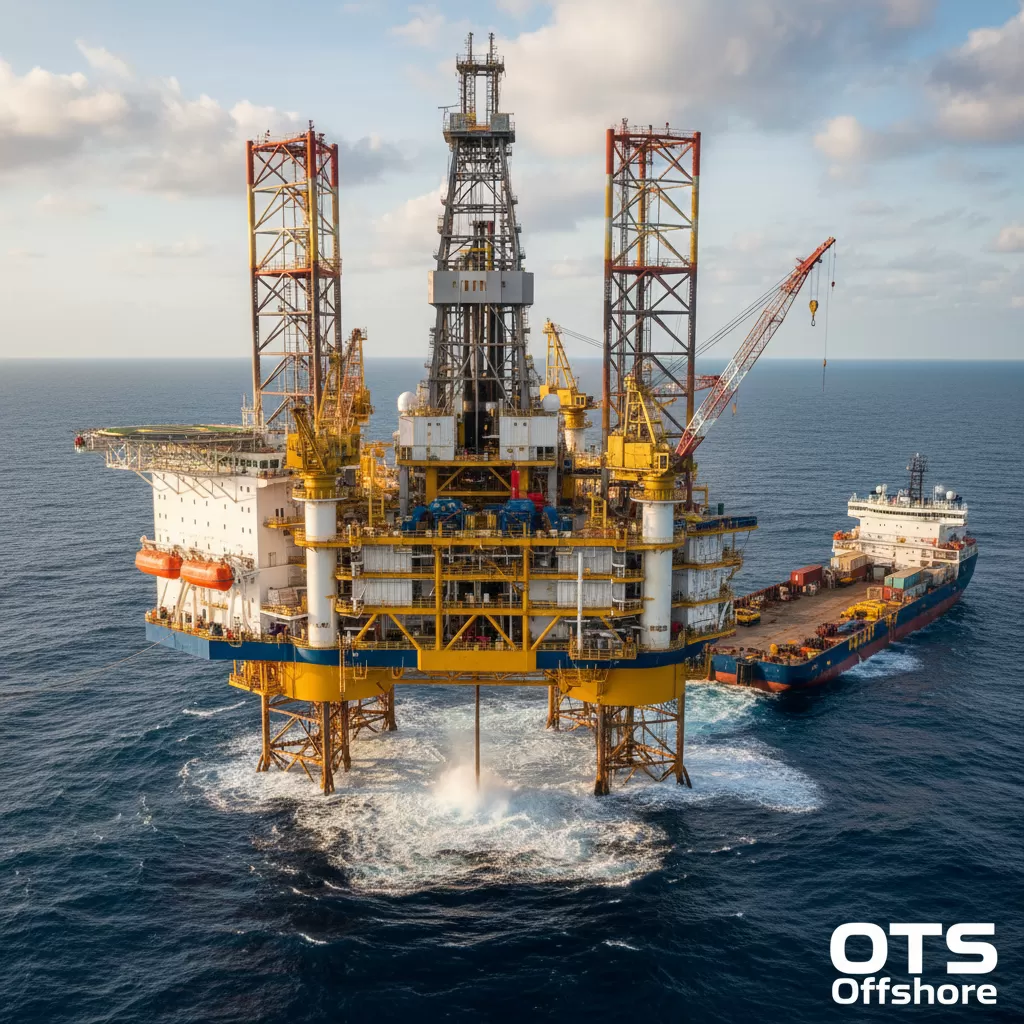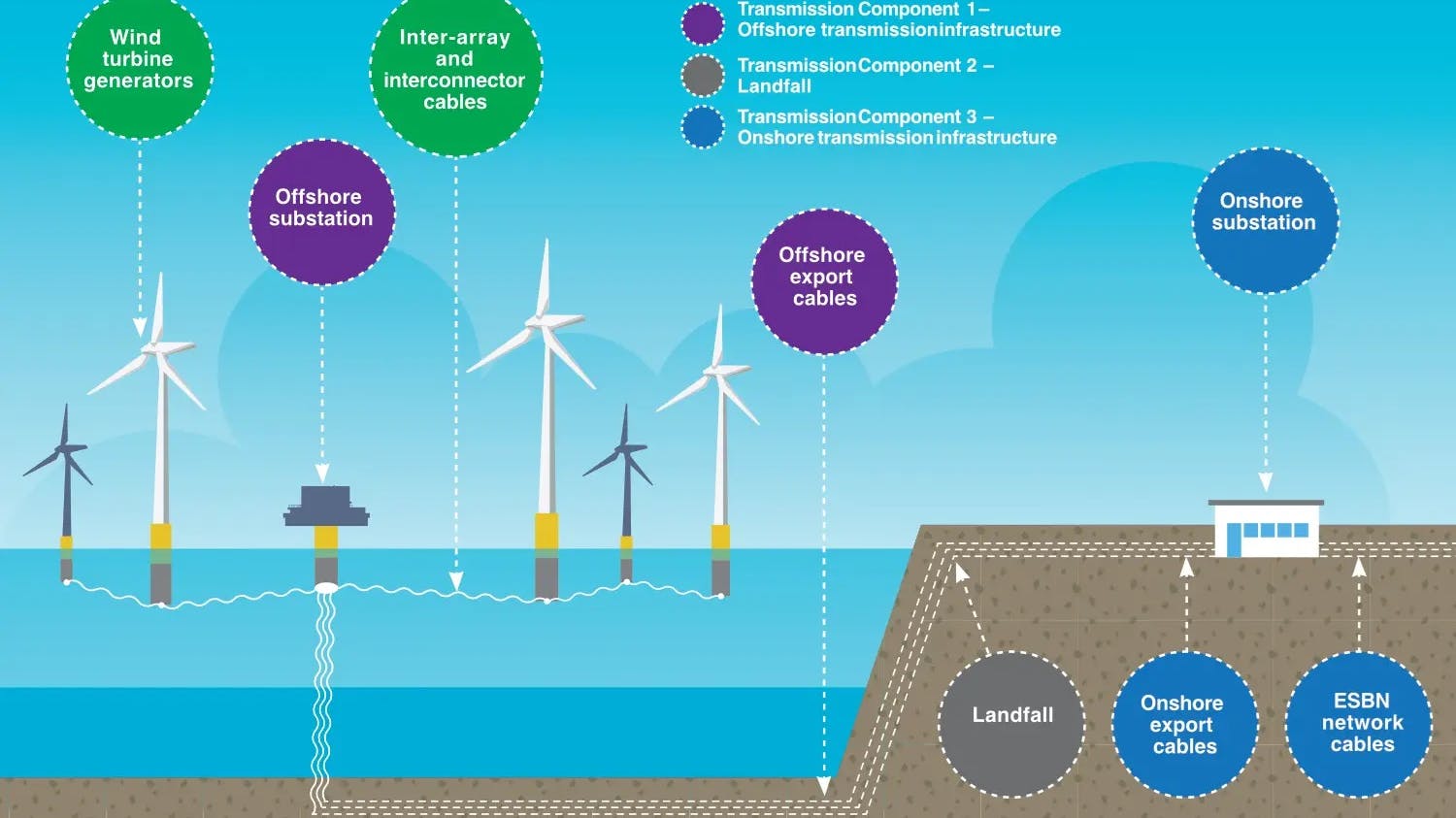 —
—
The Codling Wind Park project, a 50/50 joint venture between Fred. Olsen Seawind and EDF Renewables, is advancing into the planning application phase. The developers will submit their application to An Bord Pleanála early next week, marking a significant milestone for the development of Ireland’s offshore renewable sector and national climate policy.
Codling Wind Park aims to set up a 1,300 MW offshore wind farm, capable of powering over 1 million Irish homes with clean renewable energy. The project will be located between 13 and 22 kilometers off the Wicklow coast, and connect to the Irish grid at Poolbeg in Dublin. This project is expected to reduce Irish energy generation emissions and displace over 1.7 million tonnes of carbon, alone accounting for just over one quarter of Ireland’s 2030 target for grid-connected offshore energy.
The application is the culmination of more than 15 years of data gathering and site investigations, both onshore and offshore. These investigations include geophysical, aerial, and vessel-based surveys. The project design was also informed by advances in technology and a two-year public consultation and engagement process.
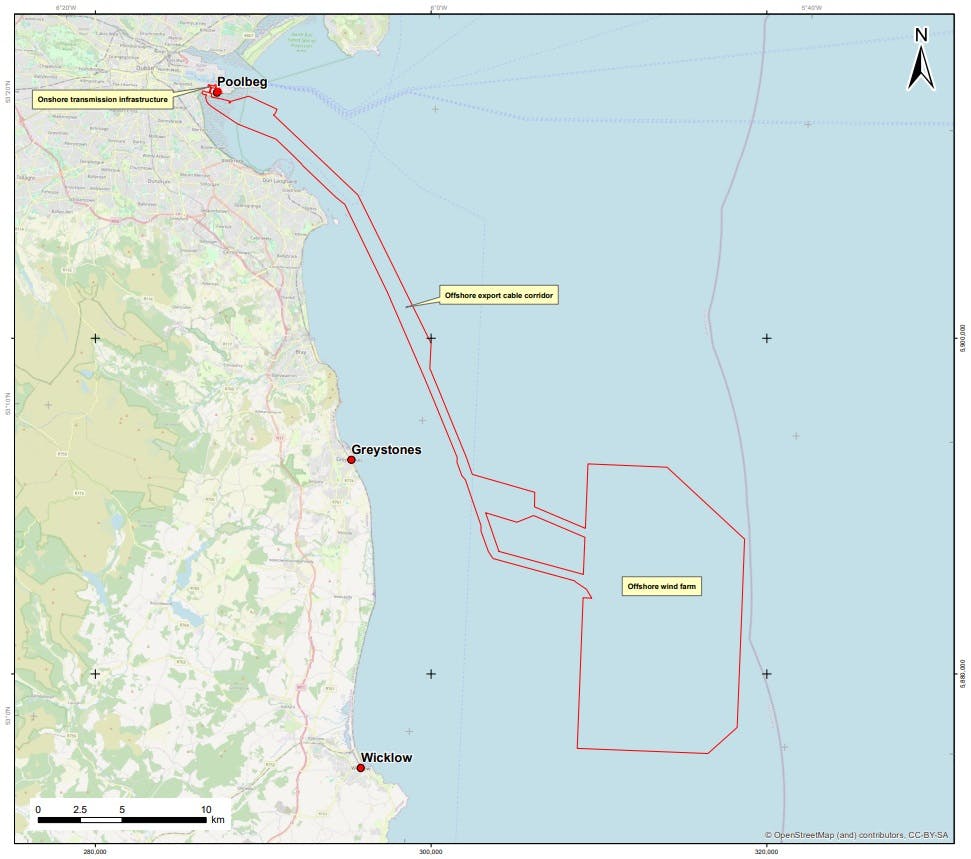
Upon receiving a positive planning outcome, Codling Wind Park is expected to begin construction in 2026-27. Construction could take up to three years to complete. The project is predicted to create over 1,000 jobs during construction and approximately 75 long-term operations and maintenance roles.
There are two design options for the wind array on Codling Bank, a raised area of seabed: 68 turbines at 314 meters tip height and 75 turbines at 288 meters tip height. Interarray cables will connect the turbines to three offshore substations within the wind farm array area. Three subsea export cables, 40-50 kilometers long, will connect the offshore substations to landfall on the Poolbeg peninsula in Dublin Bay. A 220-kV onshore substation and grid connection cables will be located on a site adjacent to Pigeon House Harbour, preparing the electricity to the specifications needed for delivery to EirGrid’s substation at Poolbeg and from there to Ireland’s national grid.
Codling Wind Park is poised to be one of the largest energy infrastructure investments in Ireland, with significant economic and environmental benefits. The project team is confident in their application, which aligns with the highest Irish and international standards of environmental assessment and planning.
In April, the project confirmed that the maximum number of turbines would be

